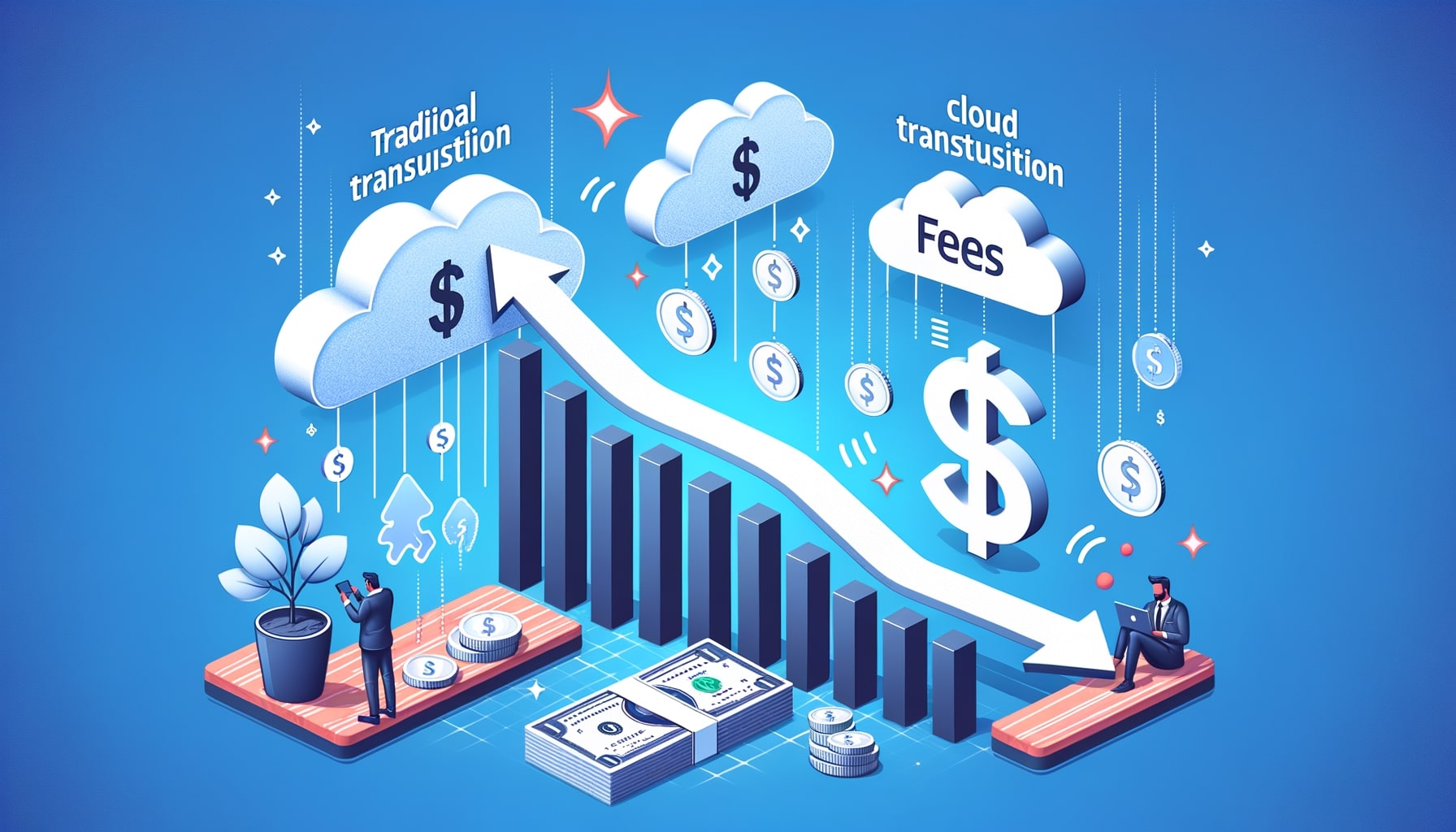How to Implement Cloud Payments in Your Business
In today’s digital age, businesses are constantly seeking ways to streamline their operations and improve efficiency. One area that has seen significant advancements is payment processing. Traditional payment methods, such as cash and checks, are being replaced by more modern and convenient options, including cloud payments. Cloud payments refer to the process of using cloud-based technology to securely process and manage payments.
This article will provide a comprehensive guide on how to implement cloud payments in your business, covering various aspects such as advantages, types of solutions, implementation steps, choosing the right provider, security and compliance, integration with existing processes, employee training, and common challenges.
Advantages of Implementing Cloud Payments in Your Business
Implementing cloud payments in your business can offer numerous advantages that can positively impact your operations and bottom line. One of the key benefits is increased efficiency. Cloud payment solutions automate many manual processes, such as data entry and reconciliation, reducing the time and effort required for payment processing. This allows your employees to focus on more value-added tasks, improving overall productivity.
Another advantage is improved cash flow management. Cloud payment systems provide real-time visibility into your payment transactions, allowing you to monitor and track payments more effectively. This enables you to have a better understanding of your cash flow position and make informed decisions regarding your business finances.
Cloud payments also offer enhanced security. Cloud payment providers invest heavily in security measures to protect sensitive payment data. They employ encryption techniques, tokenization, and other security protocols to ensure that payment information is securely transmitted and stored. This can help mitigate the risk of data breaches and fraud, providing peace of mind to both you and your customers.
Understanding the Different Types of Cloud Payment Solutions
Before implementing cloud payments in your business, it is important to understand the different types of solutions available. The two main types of cloud payment solutions are Software-as-a-Service (SaaS) and Platform-as-a-Service (PaaS).
SaaS solutions are fully hosted and managed by the cloud payment provider. They offer a complete payment processing solution, including payment gateways, virtual terminals, and reporting tools. SaaS solutions are typically easy to implement and require minimal IT resources. They are suitable for businesses that want a turnkey solution without the need for extensive customization.
On the other hand, PaaS solutions provide a platform for businesses to build and customize their own payment applications. PaaS solutions offer more flexibility and control, allowing businesses to tailor the payment process to their specific needs. However, they require more technical expertise and resources to implement and maintain.
Step-by-Step Guide to Implementing Cloud Payments in Your Business
Implementing cloud payments in your business requires careful planning and execution. Here is a step-by-step guide to help you navigate the implementation process:
- Assess your current payment processes: Start by evaluating your existing payment processes and identifying pain points or areas for improvement. This will help you determine the specific features and functionalities you need from a cloud payment solution.
- Define your requirements: Based on your assessment, create a list of requirements for your cloud payment solution. Consider factors such as payment methods, integration capabilities, reporting and analytics, security features, and scalability.
- Research and shortlist providers: Conduct thorough research to identify potential cloud payment providers that meet your requirements. Consider factors such as reputation, experience, customer reviews, and pricing models. Shortlist a few providers that align with your needs.
- Request proposals and demos: Reach out to the shortlisted providers and request detailed proposals that outline their offerings and pricing. Schedule demos to get a firsthand look at the user interface and functionality of their solutions.
- Evaluate and select a provider: Evaluate the proposals and demos to determine which provider best meets your requirements. Consider factors such as ease of use, integration capabilities, customer support, and overall value for money. Select the provider that offers the best fit for your business.
- Plan for implementation: Once you have selected a provider, work with them to create an implementation plan. Define timelines, roles and responsibilities, and any necessary training or resources required for a successful implementation.
- Configure and customize the solution: Work closely with your chosen provider to configure and customize the cloud payment solution to meet your specific needs. This may involve setting up payment gateways, integrating with existing systems, and configuring workflows.
- Test and validate: Before going live, thoroughly test the cloud payment solution to ensure that it functions as expected. Test various payment scenarios, perform end-to-end testing, and validate the accuracy of payment data.
- Train employees: Provide comprehensive training to your employees on how to use the new cloud payment system. This may involve conducting training sessions, creating user manuals, and offering ongoing support.
- Go live and monitor: Once all testing and training are complete, it’s time to go live with your cloud payment system. Monitor the system closely in the initial days to identify any issues or areas for improvement. Continuously monitor and analyze payment data to gain insights and optimize your payment processes.
Choosing the Right Cloud Payment Provider for Your Business
Choosing the right cloud payment provider is crucial for a successful implementation. Here are some factors to consider when selecting a provider:
- Reputation and experience: Look for providers with a proven track record and positive customer reviews. Consider their experience in the industry and their ability to handle businesses of your size and complexity.
- Integration capabilities: Assess the provider’s ability to integrate with your existing systems, such as your accounting software, customer relationship management (CRM) system, and e-commerce platform. Seamless integration is essential for efficient payment processing.
- Security and compliance: Ensure that the provider follows industry best practices for security and compliance. Look for certifications such as Payment Card Industry Data Security Standard (PCI DSS) compliance and data encryption protocols.
- Scalability: Consider your future growth plans and evaluate whether the provider can scale their solution to accommodate your evolving needs. A flexible and scalable solution will save you from the hassle of switching providers as your business expands.
- Pricing model: Understand the provider’s pricing structure and evaluate whether it aligns with your budget and expected transaction volume. Consider factors such as setup fees, transaction fees, monthly fees, and any additional charges for value-added services.
Ensuring Security and Compliance in Cloud Payment Systems
Security and compliance are critical considerations when implementing cloud payment systems. Here are some best practices to ensure the security and compliance of your cloud payment solution:
- Choose a reputable provider: Select a cloud payment provider with a strong reputation for security and compliance. Look for providers that have obtained relevant certifications, such as PCI DSS compliance.
- Implement strong access controls: Use strong passwords and implement multi-factor authentication to prevent unauthorized access to your cloud payment system. Regularly review and update user access privileges to ensure that only authorized personnel have access to sensitive payment data.
- Encrypt payment data: Ensure that all payment data is encrypted during transmission and storage. Encryption protects sensitive information from being intercepted or accessed by unauthorized individuals.
- Monitor for suspicious activity: Implement real-time monitoring and alerting mechanisms to detect and respond to any suspicious activity or potential security breaches. Regularly review logs and audit trails to identify any anomalies or unauthorized access attempts.
- Regularly update and patch systems: Keep your cloud payment system and any associated software up to date with the latest security patches and updates. Regularly review and apply security updates to protect against known vulnerabilities.
- Conduct regular security audits: Perform regular security audits to assess the effectiveness of your security controls and identify any potential weaknesses or gaps. Engage third-party security experts to conduct independent audits for an unbiased assessment.
Integrating Cloud Payments with Existing Business Processes
Integrating cloud payments with your existing business processes is essential for a seamless payment experience. Here are some tips for successful integration:
- Assess integration requirements: Identify the systems and processes that need to be integrated with your cloud payment solution. This may include your e-commerce platform, accounting software, CRM system, and inventory management system.
- Evaluate integration options: Work with your cloud payment provider to evaluate the integration options available. They may offer pre-built integrations, APIs, or custom integration services. Choose the option that best suits your needs and technical capabilities.
- Plan for data synchronization: Determine how payment data will be synchronized between your cloud payment system and other systems. Define the frequency and method of data synchronization to ensure accurate and up-to-date information across all systems.
- Test integration: Thoroughly test the integration between your cloud payment system and other systems to ensure that data flows correctly and that all processes are functioning as expected. Test various scenarios, such as order fulfillment, inventory updates, and financial reporting.
- Monitor and optimize: Continuously monitor the integration to identify any issues or areas for improvement. Regularly review data synchronization logs and error reports to address any discrepancies or errors promptly. Optimize the integration as needed to improve efficiency and accuracy.
Training and Onboarding Employees for Cloud Payment Adoption
Proper training and onboarding of employees are crucial for successful cloud payment adoption. Here are some tips to ensure a smooth transition:
- Develop a training plan: Create a comprehensive training plan that covers all aspects of using the cloud payment system. Consider different learning styles and provide a mix of training methods, such as classroom sessions, online tutorials, and hands-on practice.
- Provide role-specific training: Tailor the training to the specific roles and responsibilities of your employees. Provide different training modules for front-end staff, finance personnel, and IT administrators, focusing on the features and functionalities relevant to their roles.
- Offer ongoing support: Establish a support system to assist employees with any questions or issues they may encounter during the transition. This may include a dedicated helpdesk, online resources, or regular training sessions to address common challenges.
- Encourage feedback and collaboration: Create a culture of feedback and collaboration, encouraging employees to share their experiences and suggestions for improvement. This will help identify any pain points or areas where additional training or support may be needed.
- Monitor adoption and usage: Track the adoption and usage of the cloud payment system to ensure that employees are effectively utilizing the new technology. Monitor key metrics, such as transaction volume, user logins, and support requests, to identify any areas for improvement or additional training needs.
Common Challenges and Solutions in Implementing Cloud Payments
Implementing cloud payments in your business may come with its own set of challenges. Here are some common challenges and their potential solutions:
- Resistance to change: Employees may resist the adoption of cloud payment systems due to fear of the unknown or a preference for familiar processes. To overcome this, communicate the benefits of the new system, provide comprehensive training, and involve employees in the decision-making process.
- Integration complexities: Integrating cloud payment systems with existing processes and systems can be complex. Engage with your cloud payment provider and IT team to plan and execute the integration carefully. Consider leveraging pre-built integrations or seeking professional assistance if needed.
- Data security concerns: Security is a top concern when it comes to cloud payment systems. Address these concerns by selecting a reputable provider with strong security measures in place. Educate employees about security best practices and regularly review and update security protocols.
- Compliance requirements: Depending on your industry, you may have specific compliance requirements, such as PCI DSS or General Data Protection Regulation (GDPR). Ensure that your cloud payment solution meets these requirements and work with your provider to implement necessary controls and processes.
- Technical issues and downtime: Like any technology, cloud payment systems may experience technical issues or downtime. Choose a provider with a reliable infrastructure and robust support services. Have contingency plans in place to minimize the impact of any disruptions on your business operations.
Frequently Asked Questions (FAQs) about Cloud Payments in Business
Q.1: What are cloud payments?
Cloud payments refer to the process of using cloud-based technology to securely process and store payment information. It allows businesses to accept payments from anywhere, at any time, and offers increased security and convenience compared to traditional payment methods.
Q.2: How does cloud payment processing work?
Cloud payment processing involves securely transmitting payment information from the customer to the payment processor through a cloud-based system. The payment processor then verifies the transaction and transfers the funds to the merchant’s account.
Q.3: Are cloud payments secure?
Yes, cloud payments are secure when implemented correctly. Cloud payment solutions often come with advanced security features, such as encryption and tokenization, to protect sensitive payment information. Additionally, reputable cloud payment providers comply with industry standards, such as PCI DSS compliance, to ensure data security.
Q.4: What are the benefits of cloud payments for businesses?
Cloud payments offer several benefits for businesses, including increased security, convenience, and flexibility. They allow businesses to accept payments from anywhere, at any time, and offer a variety of payment options to customers. Cloud payments also streamline payment processing, reduce the risk of fraud, and improve operational efficiency.
Q.5: How do I choose the right cloud payment solution for my business?
When choosing a cloud payment solution, consider factors such as security features, pricing structure, integration capabilities, customer support, and industry compliance. Assess your business needs and requirements to determine the most suitable solution that aligns with your specific goals and objectives.
Conclusion
Implementing cloud payments in your business can bring numerous benefits, including increased efficiency, improved cash flow management, enhanced security, and streamlined processes. By following a step-by-step implementation guide, choosing the right provider, ensuring security and compliance, integrating with existing processes, and providing comprehensive training, you can successfully adopt cloud payments in your business.
While challenges may arise, addressing them proactively and seeking appropriate solutions will help you maximize the benefits of cloud payment systems and stay ahead in today’s digital landscape.










